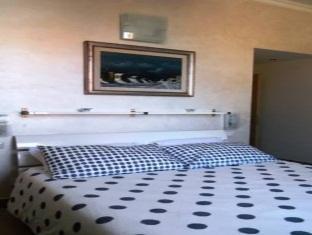Musei Capitolini -Piazza del Campidoglio 1 - 00186 Roma
1. Greet the Old Masters of the Capitoline This is the city that has nurtured the art of Michelangelo. Housed in twin palaces on opposite sides of his piazza del Campidoglio are the Capitoline Museums. They constitute the oldest public gallery in the world, having opened their collection to the public in 1734. Once inside, you can admire breathtaking paintings by Titian, Tintoretto, Veronese and Caravaggio, and beautifully crafted statues by the Baroque genius Bernini. While on the art trail, don't miss the Borghese Gallery and the Palazzo Barberini Galleria Nazionale d'Arte Antica.Getting there-Getting there (via ATAC Roma): -www.atac.roma.it-Mobile version: -www.muovi.roma.it
Opening hours-Tuesday-Sunday: 9.00 - 20.00;-Last admission 1 hour before closing time.The ticket office is situated on the Piazza del Campidoglio, on the ground floor of the Palazzo dei Conservatori.
Charges--"Museum + Exhibitions (Archimede. Arte e scienza dell’invenzione 31 May 2013-12 January 2014)" Combined Ticket: - Adults: € 13,00;
"Capitoline Museums + Centrale Montemartini + Exhibitions (Archimede. Arte e scienza dell’invenzione 31 May 2013-12 January 2014)" Combined Ticket (valid 7 days):-- Adults: € 15,00;.
PLEASE NOTE: (Italian and English) audio guides will be on sale during the exhibition period at a cost of € 6,00 for both the Capitoline Museums permanent collections and the exhibition.
In case of cultural events the price of the tickets may vary: future exhibitions
Booking: tel. +39 060608 (daily, 9:00 – 21:00).
Getting there -Getting there (via ATAC Roma):-www.atac.roma.it
Mobile version: -www.muovi.roma.it
Opening hours-Tuesday-Sunday: 9.00 - 19.00-Last admission 1/2 hour before closing time.
Situated on Via Ostiense on the left bank of the Tiber, opposite the former General markets, the Montemartini Power Plant is an extraordinary example of an industrial building transformed into an exhibition space.It was originally the first public electricity plant in Rome, named after Giovanni Montemartini; now it is the second exhibition centre of the Capitoline Museums, and contains an outstanding collection of classical sculpture from the excavations carried out in Rome at the end of the nineteenth century and during the first decades of the twentieth.The display reconstructs the monumental complexes of antiquity, tracing the development of the city from the Republic to the Late Empire. It includes works of great significance, often almost unknown to the general public, such as the huge mosaic of hunting scenes from Saint Bibiana.
The vast rooms inside the building, in particular the Hall of the Machines with its fine Liberty style furnishings, preserve turbines, diesel engines and colossal steam boilers from the power plant unaltered. This striking backdrop accentuates the translucent clarity and delicate sculpting of the antique marble.
The masterpieces of ancient sculpture displayed here, such as the sculptural group from the Temple of Apollo Sosianus, the colossal acrolithic statue of the goddess of Fortune from the Largo Argentina, and the pensive figure of the muse Polimnia, are all the more remarkable against such an intriguing backdrop. The museum recalls simultaneously the monumental grandeur of ancient Rome and the memory of the more recent industrial past.


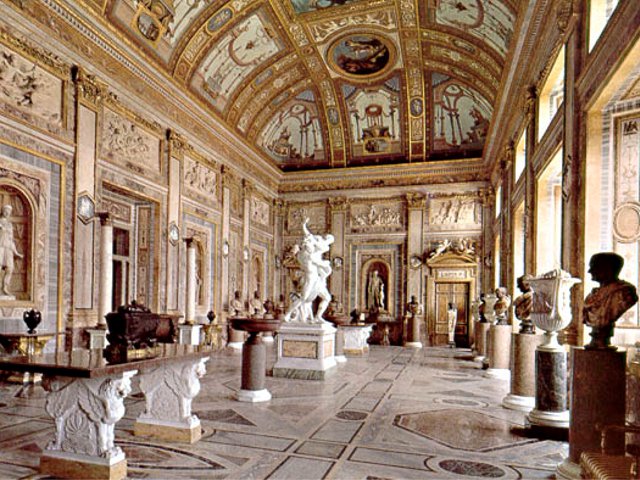
2. Connect with your inner gladiator at the Colosseum The Colosseum is a monument of epic proportions. Stories of gory battles between gladiators, slaves, prisoners and wild animals have emerged from this Flavian amphitheatre, which dates from AD 72. A vast arena of entertainment, with a seating capacity of over 50,000 people, it could fill up in 10 minutes. Nowhere in the world was there a larger or more glorious setting for mass slaughter. Today, the only gladiators that you will see are the ones parked outside for the tourist shutterbugs. But this is a necessary pilgrimage for history buffs, and the ideal starting point from which to take in the Roman remains of the city: the jaw-dropping Forum, the Domus Aurea and the Pantheon.
The Roman Coliseum is located in the heart of piazza del Colosseo, on the homonymous B(blue) metro line.Colosseum admission fee: -Full ticket - €15.50
Opening hours:
Mid February - mid March: 9 AM - 4.30 PM
Mid March - end March: 9 AM - 5.00 PM
End March - end August: 9 AM - 7.00 PM
End August - end Sept.: 9 AM - 6.30 PM
End Sept. - end October: 9 AM - 6.00 PM
End October - mid March: 9 AM - 4.00 PM

3. Stroll through the Gardens of the Villa Borghese Like any other capital city, Rome can be overwhelming. When the Colosseum starts to weigh down on you, find serenity in the gardens of the Villa Borghese, the city's most central public park. It's popular with joggers, dog-walkers and pleasure seekers. In recent years, it has grown a contemporary art museum in the Orangerie: the Museo Carlo Bilotti. To escape the crowds, climb the steep hill behind Trastevere and the Gianicolo, where you'll discover the green tree-filled expanse of the Villa Pamphili Park in the suburb of Monteverde. Children can feed turtles at the pond and ride ponies in the park, while you nap under a shaded tree before heading out to catch a glimpse of the Pope. See all parks and gardens


4. Join an audience with the Pope at the Vatican If you met the Pope, what would you say? Well, you probably won't, but you can join an audience with him on Wednesday mornings. If the weather is fine, then he'll hold this general audience in St Peter's Square; otherwise it takes place in the Sala Nervi audience hall. Expect to join clusters of Catholic devotees, and flocks of camera-waving tourists. Afterwards, you can take the opportunity to wander through St Peter's Basilica, admire Michelangelo's stunning frescoes in the Sistine Chapel and visit the famous 'Belvedere Apollo' and 'Laocoön' at the Museo Pio-Clementino among the Vatican Museums. See all religious sites and buildings
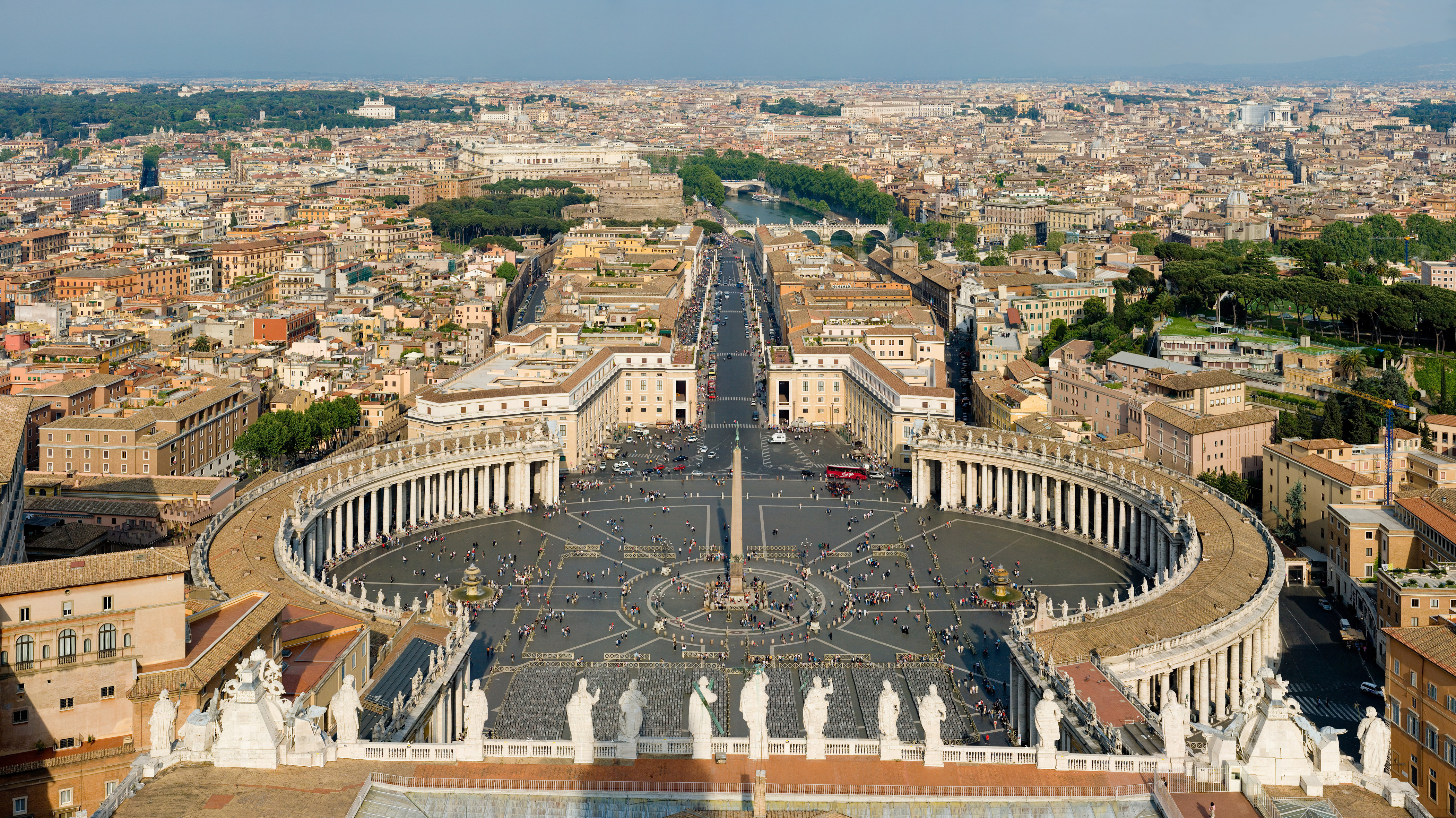
 5. Throw a coin into the Trevi Fountain
These days the gorgeous Trevi Fountain is also a Red Cross piggy bank, thanks to all the loose change that tourists fling into the water as they make a wish. Tucked away in a tiny piazza and surrounded by jostling crowds, the fountains' creamy travertine gleams beneath torrents of water and camera flashes. It's a rococo extravaganza of rearing sea horses, conch-blowing Tritons and craggy rocks, erupting in front of the Palazzo Poli. A stone's throw away sits La Città dell'Acqua, which incorporates the remains of an Imperial-age apartment building and a holding tank for the waters of the Acqua Vergine gushing underneath.
5. Throw a coin into the Trevi Fountain
These days the gorgeous Trevi Fountain is also a Red Cross piggy bank, thanks to all the loose change that tourists fling into the water as they make a wish. Tucked away in a tiny piazza and surrounded by jostling crowds, the fountains' creamy travertine gleams beneath torrents of water and camera flashes. It's a rococo extravaganza of rearing sea horses, conch-blowing Tritons and craggy rocks, erupting in front of the Palazzo Poli. A stone's throw away sits La Città dell'Acqua, which incorporates the remains of an Imperial-age apartment building and a holding tank for the waters of the Acqua Vergine gushing underneath.
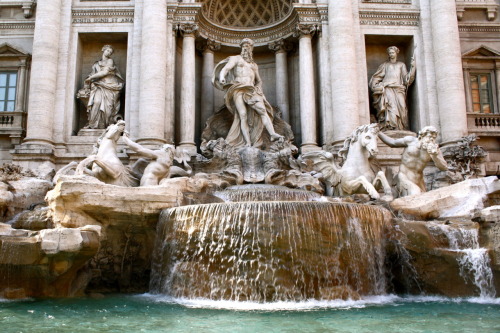
6. Perfect your geometry at the Pantheon Appraise the architecture of ancient Rome with a trip to its best-preserved building: the Pantheon. Built by Hadrian around AD 119-128, it was originally a temple to the classical deities and remains a church today, holding the tombs of the united Italy's first king and the artist Raphael. The exterior still retains its original bronze doors, and inside the dimensions follow the rules set down by top Roman architect Vitruvius. The diameter of the hemispherical dome is exactly equal to the height of the whole building, giving it the capacity to hold a perfect sphere. See all historic sites and buildings
.jpg)
7. Scope out delightful ice cream at San Crispino There's so much ice cream on every street that scoping out a unique gelato experience is quite the challenge. But you'll find what many consider to be the best ice cream in the city at Il Gelato di San Crispino. The secret is the makers' obsessive control over the whole process. The flavours change as the seasons shift – try the summer-time lampone (raspberry) and suisine (yellow plum). Only tubs are allowed because cones interfere with the wonderful flavours. See all gelaterie

8. Photograph the city's best piazzas For a snapshot of Rome's artistic heritage, visit its exquisite squares. At the Piazza del Popolo, you can follow Grand Tourists of the 18th century, who would have caught their first glimpse of the city through its most northern gate, at the end of the ancient via Flaminia. Designed in the shape of an oval by Rome's leading neo-classical architect Giuseppe Valadier in the 19th century, its focal points are the church of Santa Maria del Popolo, with a chapel by Raphael, and an Egyptian obelisk, brought to Rome by the emperor Augustus. The Piazza Navona, on the other hand, is a theatrical space, which is home to the works of great Baroque masters: the church of Sant'Agnese in Agone by Borromini and the Fountain of the Four Rivers by Bernini. See all squares
9. Scale new heights to see spectacular views If looking up at historic buildings is straining your neck, then how about gazing down at some views instead? The Vittoriano, a huge white monument to united Italy, may obscure sights on the ground, but has a lift that will zip you up to its terraces in a matter of moments to enjoy a bird's eye view. If you're a stickler for tradition, then climb the 320 steps to the top of the dome of St Peter's Basilica. It will offer you a breath of fresh air after marvelling at the magnificent frescos.
_14_11.jpg)

10. Glam up for a night at the Opera A night at the opera can be an inspiring experience and a great opportunity to wear your elegant gloves. The grey, angular Mussolini-era facade of the Teatro dell-Opera di Roma-Teatro Costanzi gives way to a beautiful and harmonious interior with a good-sized stage. Here you'll find towering rows of boxes, and loads of stucco, frescoes and intricate gilding all around. For the best acoustics, splurge on a box - it's all part of the experience.
11. Follow the legend of the wolf Throughout Rome's history, anyone aspiring to power needed a legend to lend legitimacy to their rule. And you can find the relics of one story at the Lupercal - a cave discovered by the first Roman emperor Augustus beneath his home at The Palatine. Here, the she-wolf nursed the twin brothers Remus and Romulus after they were found in a basket by the Tiber. Legend had it that the lucky Romulus climbed this hill to found the city, so the emperor decorated the cave to charm the populous. Yet the monument was consumed by the ravages of time, and only came to light again in 2008. It was 'rediscovered' by the then culture minister Francesco Rutelli of the
Democratic Party at the moment that the restored House of Augustus opened to the public. But this time around, the legend-based magic didn't work. Rutelli lost his bid to become mayor and the Democrats were beaten in the general elections.

12. Tease your tastebuds at Il Pigneto In the last couple of years Il Pigneto, just east of Porta Maggiore, has achieved that critical mass of bars and restaurants that turns a below-the-radar district hip. It's a mix of houses and low-rise 1960s condominiums, whose proximity to the San Lorenzo stockyards meant that the area suffered heavy wartime bombing. But the anarchic, bohemian feel of the place attracted arty types such as Pier Paolo Pasolini, who shot his first film here. Check out cool bars like Pigneto 41 on the central thoroughfare via del Pigneto, the slow-food inspired restaurant Primo (via del Pigneto 46, 06 701 3827, www.primoalpigneto.it); the book-lined wine bar Il Tiaso (via Perugia 20, 333 284 5283); and the shabby-chic hangout Bar Necci (via Fanfulla da Lodi 68, 06 9760 1552, www.necci1924.com).

13. Grab a slice of authentic pizza In Rome, cheesy stuffed crust pizzas would be a cultural sacrilege. Here, authentic pizzas are made with freshly tossed thin crusts in wood-fired ovens. To experience the authentic Pizza Romana, visit the Testaccio institution of Remo. To sample crunchy, gourmet Roman pizzas over dinner with a glass of wine in a rustic restaurant, try La Gatta Mangiona in Monteverde. But if you're after a quick takeaway, then stop by the newly opened Bir and Fud, where
pizzas made with organic flour and experimental toppings are served with mugs of lager.

14. Have a glass of white Frascati If you're a wine buff, then visit Al Vino Al Vino, a friendly hostelry with a range of over 500 wines. Its real specialty is the distillati: fine grappas, whiskies and other strong spirits. There's Sicilian-inspired food to soak it all up. Apart from this, enoteche (wine shops) can be found on almost every street in the city. We recommend visiting the painters' haunt Antica Enoteca di Via della Croce and the cosy wine bar of Il Goccetto.

15. Discover geek chic at a book bar Italians are not big readers, but they've taken to nights out in book bars, where they drink, have fun and discuss literature. Caffè Letterario led the charge in a part of the city bustling with Terza Università students. The move came on the crest of a cultural wave accompanying the transformation of peripheral Mattatoio into an area of cutting-edge cool. Bohemian Trastevere, just across the river, boasts the highest concentration of book bars, the largest of which is Bibli, where readers can mingle with artists and authors over a glass of wine.
16. Browse in the boutiques If you don't fancy wearing a toga and tie-up boots like the Romans did, then you can go shopping in plenty of boutiques that sell modern clothes for all tastes. You'll find many of the best of Rome's independent designers in a cluster of boutiques: the Arsenale is the perfect place to find Bohemian chic, Le Gallinelle stocks reworked vintage threads and Le Tartarughe cultivates classic easy-to-wear clothes with a twist.
17. Amble around antique markets Are you after an antique souvenir? Among the best places to go shopping are via del Babuino, via Giulia and via de' Coronari; the latter stages antique fairs in May and October. Occasional bargains can be picked up at flea markets: the Porta Portese sells bootleg CDs, furniture, clothes and fake designer gear, while the Via Sannio is piled high with vintage articles of clothing. Make sure that you watch out for pickpockets.

18. Catch glimpses of Napoleon Blink and you could miss any mention of Napoleon's reign in Rome, which lasted from 1798 to 1814. Dreams of empire were his fantasy; he even shipped in Pope Pius VII for his imperial coronation in Paris in 1804. Rome became a means of amassing wealth: he instructed his army to haul back cartloads of marbles and Old Masters. But his mother lived happily on the Piazza Venezia for years. The Museo Napoleonico contains pieces relating to the imperious Frenchman's family.

19. Indulge in sweet treats Chocolate is one of Rome's sinful indulgences and you'll find exquisite chocolate shops and cafés in this pantheon of gastronomic delights. Cioccolata e Vino hedges its bets with a double temptation. Half shop, half bar, this chocolate-box-sized Trastevere is full of treats, from decadent hot chocolate to handmade sweets. Pop into Da leccarsi i baffi (via del Panico 31, 06 9799 7935) for bites of cherry-filled chocolate cases, topped with warm melted chocolate and stop at Moriondo & Gariglio for freshly wrapped candy. For a genuine Italian coffee, visit the famous Sant' Eustachio, whose walls are pasted with celebrity testimonials. The coffee is fantastic; try the gran caffè, which is served frothy and sweet.

20. Stay up for a late drink Is it one in the morning and you don't feel like going home? No problem. Head to Etabli (Vicolo delle Vacche 9, 06 687 1499, www.etabli.it), where bright young things enjoy drinking in a cosy environment with chandeliers and armchairs set around the fireplace. If you fancy some glamorous dining and drinking, step into the designer interior of Crudo. Among its attractions are installations, plasma screens and DJS. Meanwhile, the Friends Art Café takes care of all your food needs, from breakfast to after-dinner cocktails. The chrome detailing and brightly coloured plastic chairs plus fashion TV lend a retro-'80s funhouse feel. You might feel like moving in.


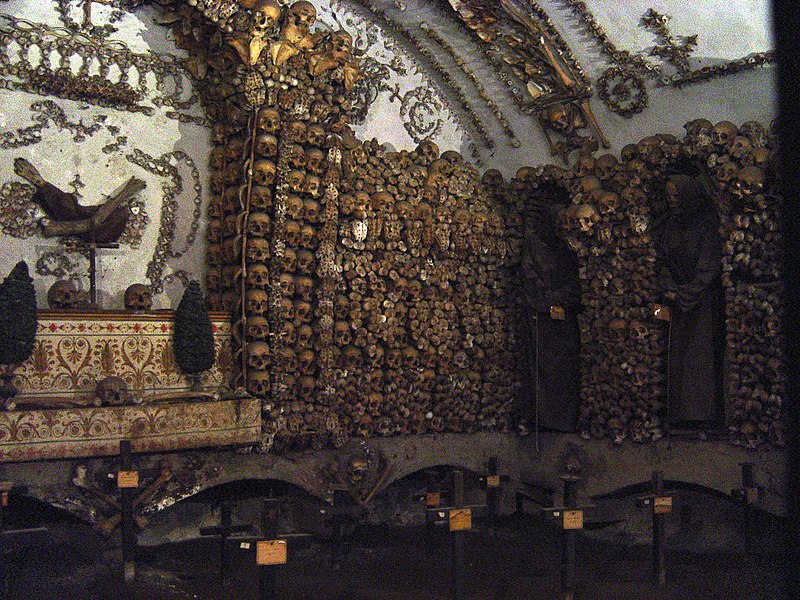
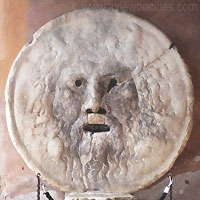
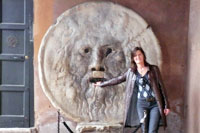
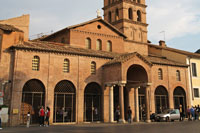

 With trains departing every 30 minutes Leonardo express
non-stop train service takes you - every day of the year - from
Leonardo da Vinci Airport to the centre of Rome in only half an hour.
With trains departing every 30 minutes Leonardo express
non-stop train service takes you - every day of the year - from
Leonardo da Vinci Airport to the centre of Rome in only half an hour. 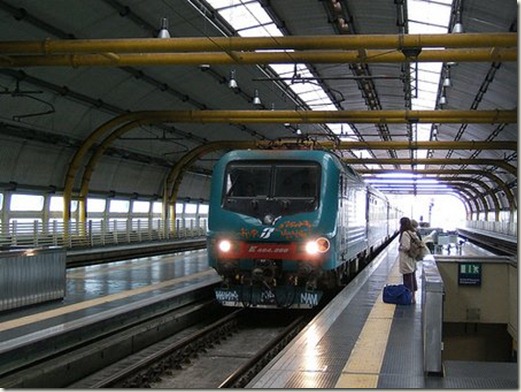

 This sign relates to a small off-street parking lot. The white P on blue background is the standard sign indicating that parking is permitted. On the next plate, the parking meter symbol indicates pay parking, the crossed hammers indicate that the rule applies on weekdays (i.e. not Sundays or public holidays), and the figures show the rule applies from 8 am to 1 pm and from 2.30 pm to 8 pm. The tiny print says cars must display a ticket obtained from the parking machine. "Nei limiti tracciati" means "In this area".
This sign relates to a small off-street parking lot. The white P on blue background is the standard sign indicating that parking is permitted. On the next plate, the parking meter symbol indicates pay parking, the crossed hammers indicate that the rule applies on weekdays (i.e. not Sundays or public holidays), and the figures show the rule applies from 8 am to 1 pm and from 2.30 pm to 8 pm. The tiny print says cars must display a ticket obtained from the parking machine. "Nei limiti tracciati" means "In this area".  This marks the entry to a zone with a speed limit of 30 km/h.
This marks the entry to a zone with a speed limit of 30 km/h.  This is the sign to pay attention to.
This is the sign to pay attention to. Finally, this sign on the right of the street says that no vehicles of any kind may enter between 06.00 and 14.00 on Thursdays, because of the weekly market.
Finally, this sign on the right of the street says that no vehicles of any kind may enter between 06.00 and 14.00 on Thursdays, because of the weekly market. 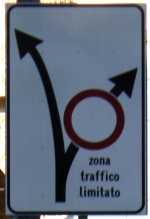 From Vicenza: an advance direction sign warning that the turn to the right leads to the ZTL.
From Vicenza: an advance direction sign warning that the turn to the right leads to the ZTL.  Here is one from Besenello with a lot of wording. You may not understand the words, but the "No vehicles" symbol is very clear.
Here is one from Besenello with a lot of wording. You may not understand the words, but the "No vehicles" symbol is very clear. 








